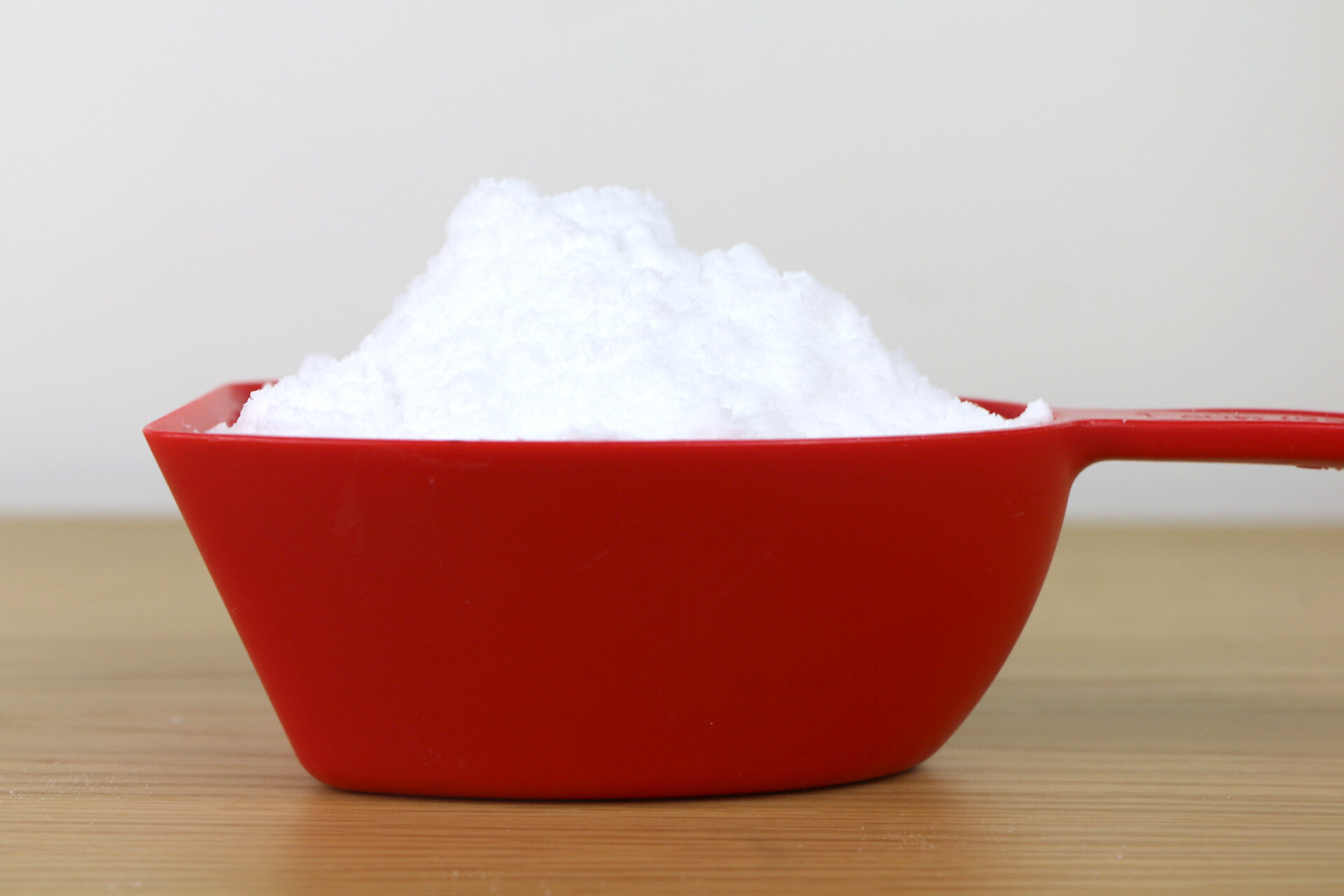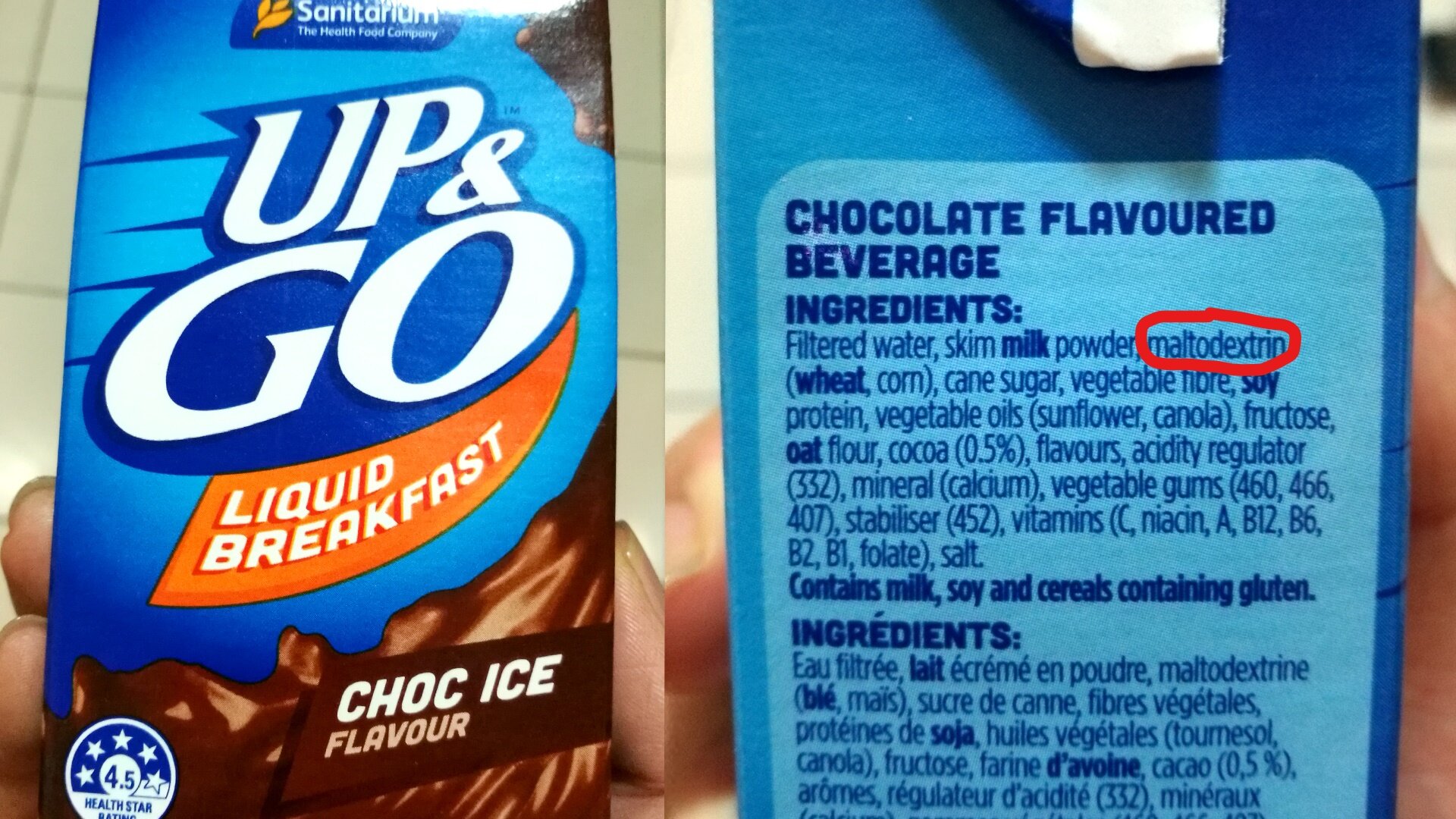How to limit your intake of a hidden high GI ingredient - maltodextrin
When nutritionists evaluate the nutritional value of a food or ingredient, some of the main things considered are: if it has a good amount of vitamins and minerals or is just empty calories, if it is highly processed, and how fast it raises our blood sugar levels if it is a carbohydrate (i.e. GI value). That’s why when we think about added sugar, refined sugar or table sugar, we think it is an unhealthy ingredient as it doesn’t have any nutritional value and raises our blood sugar level very fast (i.e. is high GI).
Are there any other ingredients that are even less healthy than added sugar due to these same reasons? We’re going to introduce one of them today – maltodextrin.
Before we introduce it, let’s compare it with added sugar:
So, what is maltodextrin?
It is a polysaccharide that is used as a food additive.
It is a highly processed neutral tasting white powder made mainly from starchy vegetables e.g. potato and corn.
It is commonly used in a large variety of foods for improving their flavour, thickness or shelf life.
It is very safe to consume as it is basically a type of carbohydrate. When you see maltodextrin on the ingredient list, it adds to the amount of carbohydrates on the Nutrition Information Panel.
That’s really all you need to know about it.
Sick of reading articles? Watch a fun video about maltodextrin I’ve created here.
A fun fact about maltodextrin
I think you should be convinced to limit this stuff from your diet by now. But did you know that maltodextrin is an essential supplement for a lot of athletes?
It’s kind of shocking, isn’t it? Well actually, it isn’t.
Why do they use it? It’s because of the natural characteristics of maltodextrin we already mentioned – fast absorption which leads to fast rises in blood sugar levels and fast energy release. A great supplement to be used in a lot of sports and exercises, but an unhealthy ingredient to be used in everyday foods.
How can you avoid it?
To be fair, only a negligible amount of maltodextrin is needed during the manufacturing process for a lot of foods. For these products, you don’t need to worry about it.
However, for some products, the amount can be significant. If food companies don’t write the percentage of maltodextrin used, we simply don’t know the exact amount since it’s included in the Carbohydrate count in the Nutrition Information Panel. However, there is another way to find out if maltodextrin is used heavily in a product or not. Here’s the dietitian’s secret – focus on the ingredients.
How to read the ingredients list
In Australia, all foods must carry an ingredient list on the back of the pack, containing all the ingredients a product has. The order used for the first ingredient to the last is based on its proportion. This is the key: for most products, the first 3-4 ingredients account for more than 90 – 95% of the product. To help you significantly limit your intake of maltodextrin, make sure it does not appear in the top 3 or 4 ingredients, depending on how strict you are. For example, if it appears as the 5th ingredient onwards, the quantity is so small that you can basically ignore it. It will not cause any problems for your health.
This rule applies to most products, but not all. There are exceptions, like this one: a marinated meat product.
If we know that the first ingredient accounts for 96%, even if maltodextrin is the second ingredient, it will definitely be less than 4%. We can confirm this by reading the Nutrition Information Panel (NIP). According to NIP, there are only 3g carbs per 100g. Maltodextrin is only a part of this 3g. Therefore, it is a very small amount that you don’t need to worry about.
Have a look at this one, again maltodextrin is second in the ingredient list. However, when you look at NIP, it only contains 1.2g carbs per 100g. As maltodextrin is classified as a carbohydrate, it means the amount of maltodextrin is less than 1.2g, which is a very small amount. Therefore it is ok. However, on a separate note, you may want to limit the intake of this product simply because of its high sodium content.
However, you will be surprised to see how many food products have large amounts of maltodextrin. I’ve done all the hard work for you.
Here’s 10 products high in maltodextrin found in Coles and Woolworths that may surprise you.
1. Most types of powdered gravy
2. Some types of Cup a Soup
(Being highly processed and high in added sugar and salt are other reasons why I wouldn’t recommend them)
3. Regular Up & Go
(Their high added sugar content is another reason why I don’t recommend it.)
4. Some ‘Pasta & Sauce’ products
(Plus, being highly processed and high in salt are other reasons why I don’t recommend them)
5. Twisties
(Being highly processed, low in fibre and high in calories and salt are other reasons why I don’t recommend it)
6. Nutri-Grain
(Its high added sugar content and low in fibre are other reasons why I don’t recommend it)
7. Some corn chips
(Being highly processed, low in fibre and high in calorie are other reasons why I don’t recommend it)
8. This liquid stock
(Maltodextrin is second on the list!)
9. Some powdered sauce
(Plus, being highly processed and high in salt are other reasons why I don’t recommend it)
10. Some marinated chicken kebabs
Next steps
Have a look in your pantry cupboard, your fridge and on your kitchen bench. If you find any products that you use quite often which lists maltodextrin in the top 3 ingredients, you may want to consider buying them less often. Maltodextrin isn’t toxic, however, it functions the same way as refined or added sugar. It will have an impact on your health if you regularly choose to have foods that contain a significant amount of it.
Written and data collected in Mar 2020.















